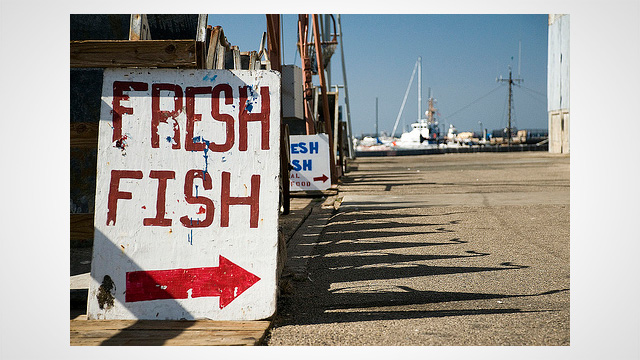Dandelions! Greens! Is it? Can it be? It must be! (drum roll please)…It’s SPRING!
It’s enough to make my blue eyes turn turquoise. No kidding.
Now, if you’re like me, then your normal recipe for dandelions is a good hard yank with a garden-gloved fist followed by a cold beer for all your hard work. But seeing as these were Italian dandelions, that just wouldn’t do. As we all know, Italians design hotness and their dandelions are no exception.
So…well excited to put these babies to the test, I popped on down to my friendly neighborhood fish market and picked up some lovely arctic char – a nice fatty fish that could play favorably on the flavor see-saw with the dandelions, which I discovered are quite bitter.
Farmbox Ingredients:
* Italian dandelions
* Hard-neck garlic
Poaching is my new fave method of cooking some types of fish – particularly nice fatty ones like salmon and arctic char. It’s super super easy, but does require some patience and a touch of skill to maintain a very low temperature of around 125 degrees F. I do my best to keep the temp where it needs to be by using a candy thermometer, though truthfully it generally slides between 125 and 150 throughout the 10 minutes or so that it takes to poach a couple palm-sized fillets of arctic char.
To poach the fish, just heat an inch to an inch and a half of olive oil in a 12 pan, add some fresh herbs (I used thyme) and a thinly sliced garlic clove, heat the oil to 125 degrees and slide the fish in for about 10 minutes. If the oil doesn’t cover the fish you may want to (carefully) flip it for the last minute or so. Drain on a paper towel and salt and pepper to taste. It’s nice to put a little piece of the herbs from the oil on the fish for garnish.
For the dandelions, as with nearly every vegetable I can think of, you can’t go wrong if you start with bacon. Just chop some up and throw it in a skillet. Let it cook for a few minutes over high heat – the goal is not to have crisp, well-cooked bacon, just to cook it enough and to render the fat, because that’s the goodness in which your otherwise healthy vegetables will cook. When the bacon’s in the right place (remember, it doesn’t stop cooking when you add the veggies), throw in the veggies and let them cook over high heat. Add pepper and taste. If the bacon gives it enough salt, then let that be enough, if it’s not, you know what to do. After a few minutes, if you have some white wine lying around (and if you’re like me, I just know you do) pour some in and scrape up the bacon bits stuck to the frying pan. Let the wine cook down with the greens for 3 or 5 minutes.
Done, done and done. Delish!
– Shawn Traylor, Farmbox Blog
